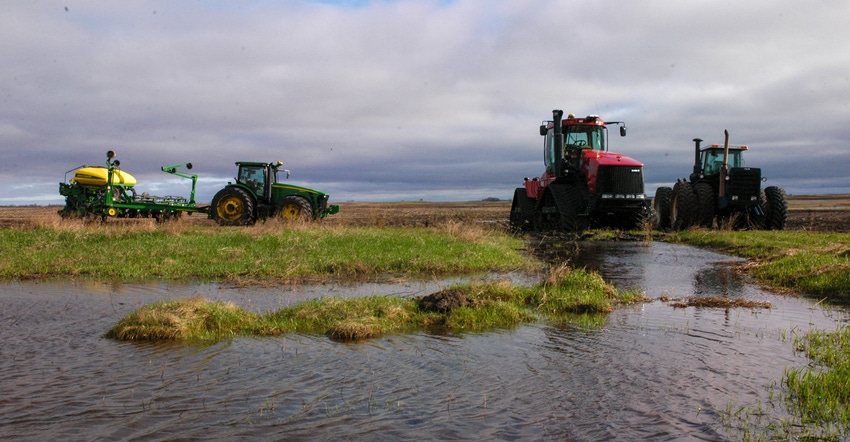
There were more than 4.7 million prevented planting acres in North Dakota and South Dakota last year. Lessons gleaned by Natural Resources Conservation Service-South Dakota about managing those acres include:
1. Wait for soils to dry. When soils begin to thaw, do not try to graze cover crops planted on prevented planting acres.
2. Too wet to bale. Baling cover crops on prevented planting acres was generally not successful because some of the species in cover crop seed mixes remained too wet to bale.
3. Weeds are not cover crops. Prolific weeds such as marestail, waterhemp and other amaranth species lacked the positive soil structure benefits of cover crops. Many species, especially herbicide-resistant ones, produced harmful competition and increased weed seed banks. This greatly outweighed the small potential of soil carbon capture or slight erosion benefits.
4. Tillage troubles. Tillage significantly increased the probability of fallow syndrome in the next year’s cash crops, especially corn.
5. Uncontrollable weeds. Tillage and herbicide effectiveness may have been reduced because weeds were often too large for full control.
6. Soil health sabotage. Some cover crop seed blends produced a lot of biomass. Then, rather than waiting for the biomass to break down over the winter, some farmers tilled fields, which reduced the soil structure and decreased the amount of carbon moving into the soil.
7. Too late for cover crop. If you waited until late July before seeding a cover crop, tall weeds and weather issues reduced cover crop stands and increased erosion and weed seed production.
8. Annual ryegrass and cereal rye are different. Cereal rye is more cold tolerant and better suited to being seeded later in fall than annual ryegrass. It provided good spring growth to remove excess moisture and created a soil armor mat that can reduce weeds. It’s best to terminate cereal rye before it reaches 16 inches tall in spring, so it doesn’t tie up nitrogen.
Annual ryegrass (a cool-season grass) developed good fall grazing biomass if seeded in late summer. It consumes less water than cereal rye, may winterkill in colder climates and is more difficult to terminate in the spring during cool weather when glyphosate translocation is reduced than cereal rye.
9. Millets aren’t the same, either. Foxtail millet is a fast-growing summer cover, while proso millet produces less biomass. Forage-type pearl millet provides the most biomass.
10. When selecting cover crop species, consider what the cash crop will be next year. If the next crop will be corn, limit how much warm-season grass is in the mix. Use a low carbon-to-nitrogen ratio species such as brassicas and a few legumes. Add flax and oats that feature high mycorrhizal fungi association.
To help manage water, seed winter cereals so living roots can take up water in the fall and spring. Terminate it two weeks before planting corn. If going to soybeans, limit broadleaves in the mix. Use warm and cool-season grasses and some brassicas. Seeding only one crop type (such as brassicas) is not recommended. To optimize soil benefits, seed more overwintering crops like cereal rye (not annual rye) or triticale.
To learn more prevented planting lessons, visit NRCS online and locate the April 16, 2020 information update, titled, “Prevented Plant Acres in South Dakota Management Scenarios for 2020, How to Determine Your Best Options.”
Kurt Lawton, an Eden Prairie, Minn., writer working on behalf of NRCS-South Dakota, contributed to this article.
Read more about:
Prevented PlantingAbout the Author(s)
You May Also Like






